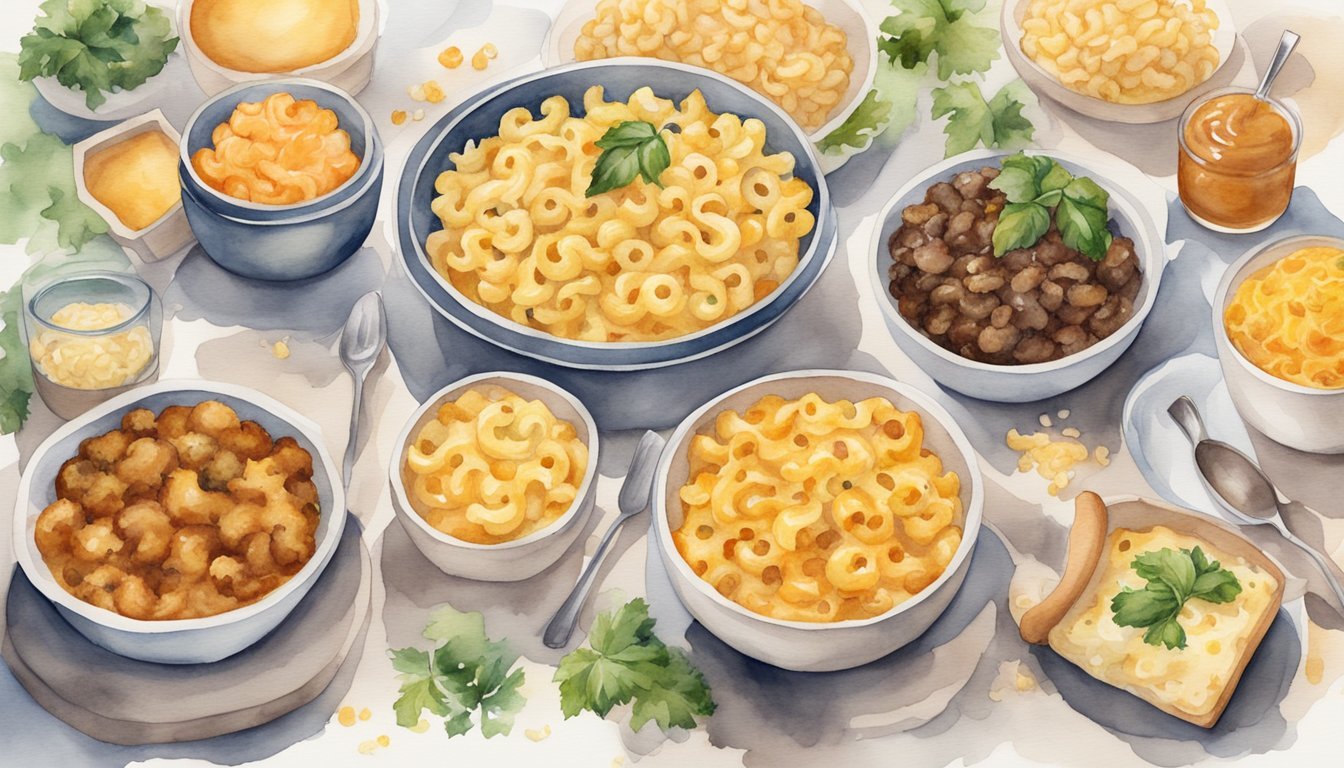Origins and Evolution of Mac and Cheese
Macaroni and cheese has a rich history that spans back to ancient cookbooks and has evolved into a beloved dish across various cultures, particularly making its mark in the United States thanks to figures like Thomas Jefferson.
Ancient Roots and European Influence
The earliest known recipes for a dish resembling macaroni and cheese date back to the 14th century, with Italy and medieval England being key players in its development. The “Liber de Coquina,” one of the oldest medieval cookbooks, contains a recipe called “de lasanis” that reflects the essence of pasta and cheese casseroles. Additionally, “Forme of Cury,” an English cookbook from 1390 attributed to the chefs of Richard II, includes a dish called “makerouns” featuring cheese-covered pasta.
In Italy, recipes for pasta with parmesan and other cheeses were solidified in print by chefs like Maestro Martino in his “Libro de Arte Coquinaria,” which outlined a “Roman macaroni” dish. From the soft, fresh pasta varieties of Italy, versatile recipes made use of durum wheat to create more stable, dried pasta that paired with robust cheeses like parmesan.
The American Journey
The iconic American version of macaroni and cheese has its roots in European recipes, but it was Thomas Jefferson who, entranced by the pasta dishes encountered during his time in France, introduced an American twist. Jefferson, enamored with the dish and pasta in general, brought back European recipes and a pasta machine to Monticello.
It was his enslaved chef, James Hemings, who honed the dish’s recipe, merging European techniques with Virginia ingredients, likely replacing the harder-to-find parmesan with readily available cheddar. This adaptation of macaroni and cheese was served at a state dinner in 1802. It wouldn’t be until much later, with the advent of industrialization, that boxed mac and cheese, like the Kraft Dinner, became a staple of convenience in American households.
Throughout the years, recipes such as those by Elizabeth Raffald in “The Experienced English Housekeeper” for a macaroni and cheese dish using béchamel and cheddar and Mary Randolph’s “The Virginia House-Wife” contributed to the dish’s evolution. Today, macaroni and cheese remains a versatile canvas, incorporated into gourmet versions with lobster or gouda, and remaining a cornerstone in Southern and black community comfort food traditions, evidencing its transformation from an aristocratic novelty to a cultural mainstay.
Cultural Impact and Modern Variations

Macaroni and cheese has evolved from a simple comfort food into a culinary canvas for creativity and cultural expression. This section examines its widespread accessibility, adaptation across various cultures, and its prominence in media and entertainment.
A Dish for All: Accessibility and Adaptability
Mac and cheese is renowned for its accessibility and adaptability. Originating from early European pasta dishes, it transformed into a quintessential American comfort food. Key ingredients like cheddar cheese and milk base the classic cheese sauce that is beloved by many. Over time, variations have emerged using other types of cheese such as parmesan and gruyère, often leading to a richer flavor profile. During the Great Depression and periods of food rationing in World War II, mac and cheese was valued for its affordability and the use of accessible ingredients like processed cheese and breadcrumbs. Modern dietary needs have also been catered to, with the creation of gluten-free and vegan options, showcasing the dish’s ability to adapt and remain a staple in diverse communities.
Prominence in Popular Culture
Mac and cheese has embedded itself in American popular culture as more than just a dish; it’s a symbol of culinary nostalgia and has been featured extensively in media and television. It gained prominence after being served at a state dinner in the White House during Thomas Jefferson’s presidency. The industrialization era saw mac and cheese become more convenient with the advent of boxed macaroni and cheese, which became a popular ration during the Second World War. Today, the dish continues to thrive, with regional variations in cities like New York and Philadelphia. It has also made an appearance in fast food menus and is pivotal in the holiday traditions of many American households. The innovation within this simple dish reflects its unique ability to capture taste and nostalgia, while also mirroring social and economic trends.

